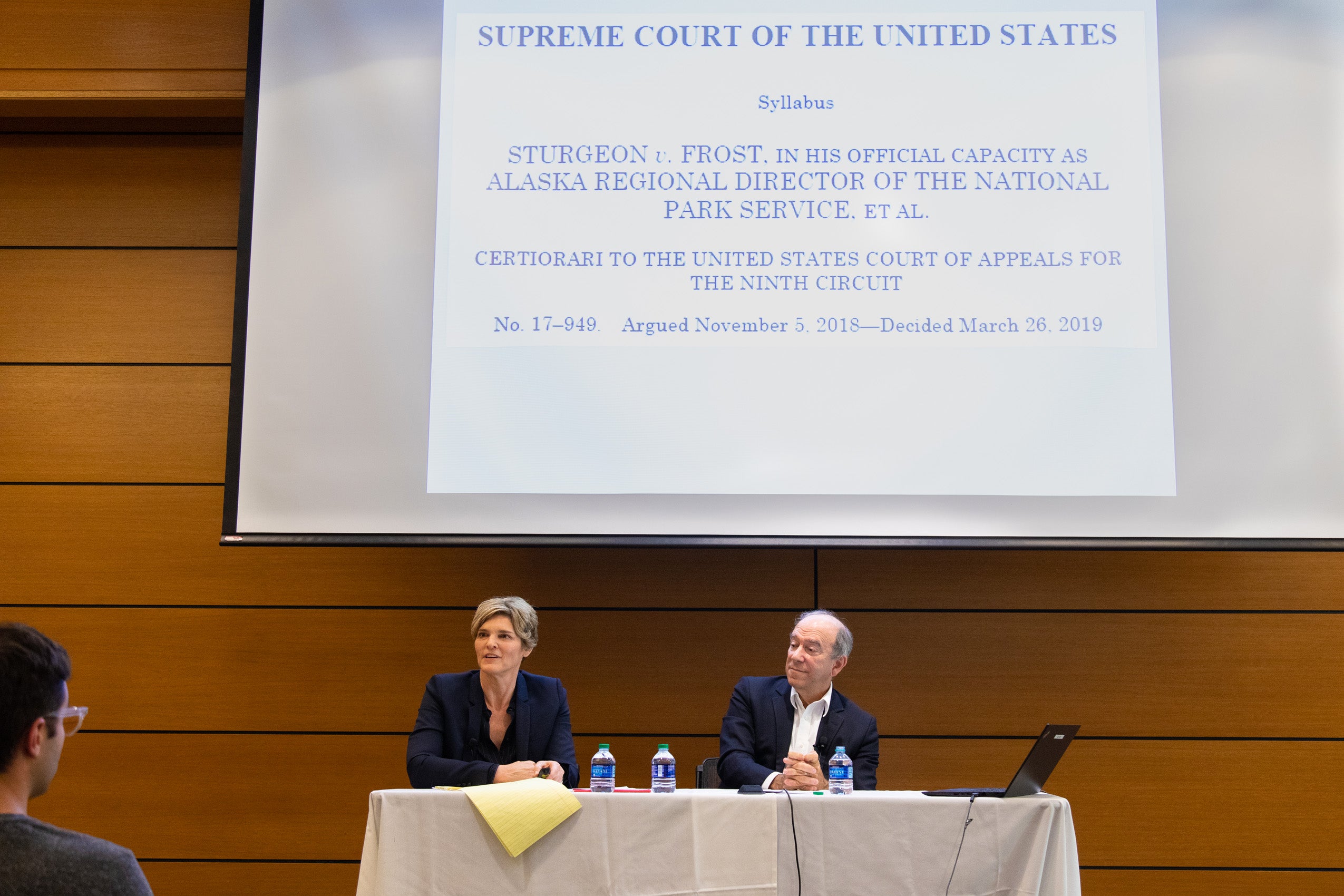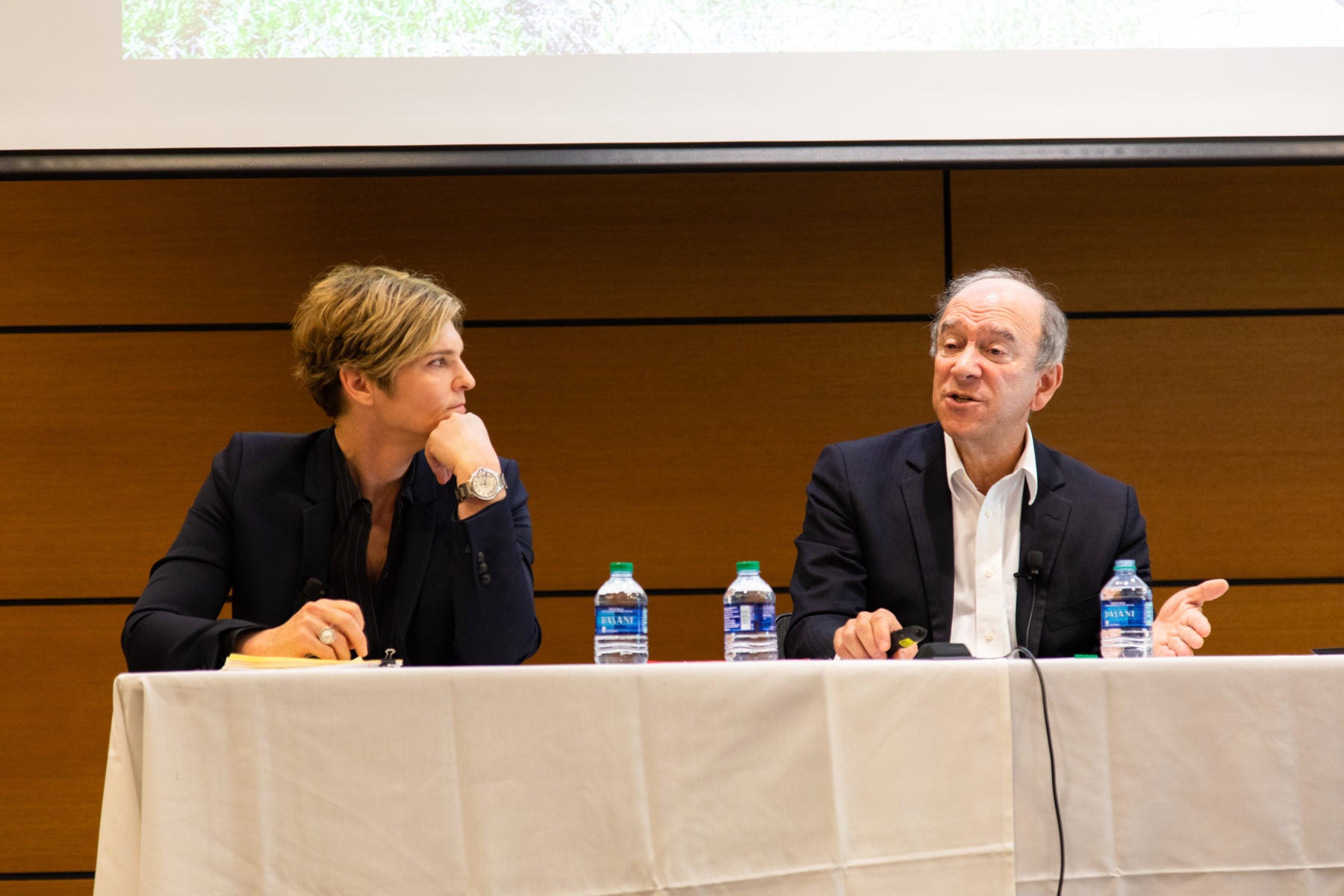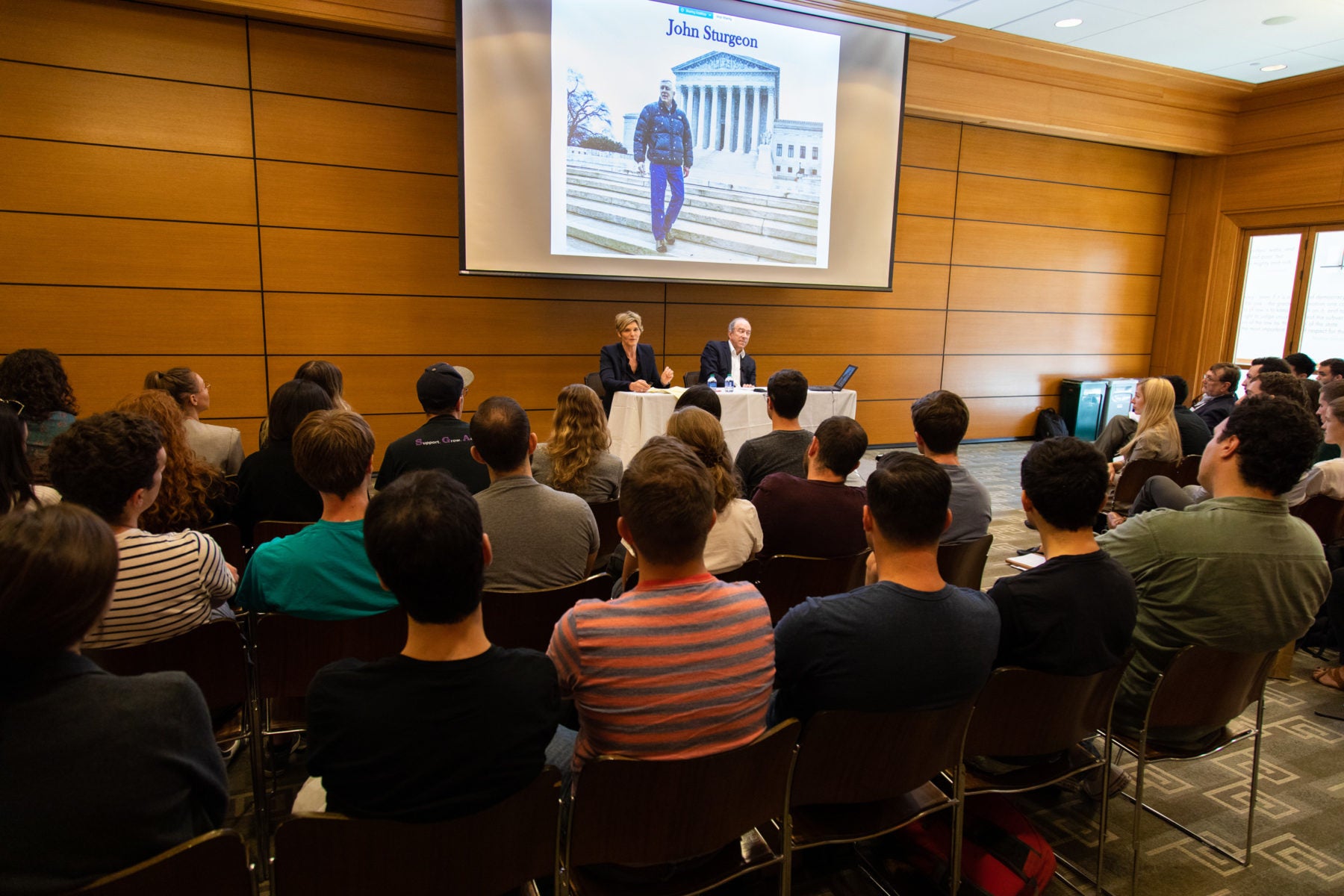These are potentially troubling times for environmental law in the Supreme Court, according to Harvard Law School Professors Jody Freeman LL.M. ’91 S.J.D. ’95, director of HLS’ Environmental and Energy Law Program, and Richard Lazarus ’79, a leading expert in environmental law and the Supreme Court. Though the news isn’t all bad, both warned of brewing issues ahead.
The two professors focused on environmental cases in their annual “SCOTUS Review and Preview,” held at HLS on Sept. 27.
They presented the past year as one of transition, with the emergence of a new conservative majority. But as Lazarus noted at the outset, the rightward swing hasn’t been quite as dramatic as expected—at least not yet.

Credit: Lorin Granger/Harvard Law School
“The Court is trying to find a new equilibrium,” he said. “One of the big issues was how far the conservative majority would go and how quickly, and there have been some surprising results.” The first surprise was that the liberal faction has reasserted itself: Over the past term the justice who most often asked the first question was Ruth Bader Ginsburg ’56-’58. “This was a symbolic statement from her, an ‘I’m still here’.” Also surprising, Lazarus said, was that Trump appointees Brett Kavanaugh and Neil Gorsuch ’91 have only voted the same way 53 percent of the time. “They’re not liberals, but there was a lot of fragmentation,” he said. “It’s a Court that’s really in search of itself.”
Still, certain unresolved cases hold ominous signs for environmentalists. Freeman cited two cases where legal distinctions that favor environmentalists might be redefined.
One is the “critical habitat” deemed essential to the survival of a species. In the case of Weyerhaeuser Co. v. United States Fish and Wildlife Service, the critical habitat of the endangered dusky gopher frog was designated to include a 1544-acre site that it had not inhabited for decades. The Weyerhaeuser Co. sued over the latter, wanting to use that land for development; the district court and 5th Circuit Court of Appeals both ruled that the no-longer-occupied land was still critical under the Endangered Species Act. In November 2018, the Supreme Court unanimously vacated that decision, issuing a narrow ruling directing the 5th Circuit to weigh the definition of habitat before reviewing a government designation of “critical habitat.”

A second case from last term, Sturgeon vs. Frost, dealt with the distinction between public and private land. The case involved the National Park Service—which has a nationwide ban on hovercrafts on waterways in national parks—and a moose hunter named John Sturgeon who sued after he was prohibited from piloting his hovercraft over the Nation River in Alaska’s Yukon Preserve. In its March 2019 ruling, the Supreme Court reversed a Circuit Court ruling, and said that Alaska’s federal park system could not enforce a previous ban on hovercrafts.
On the surface this was a defeat for environmentalists. But Freeman pointed out the special circumstances here: It was the riverbed, not the conservation land itself, that couldn’t be regulated by the state, since Alaska’s charter doesn’t allow it to control bodies of water as public land. “If Mr. Sturgeon had brought his claim in any other state, he would not have had a prayer of succeeding.” On the other hand, the case still meant that the National Park Service had lost jurisdiction over 18 million acres of nonpublic land in Alaska. “That’s a very significant loss of regulatory power,” said Freeman.

Even more concerning, Lazarus said, is the future of the Juliana vs. United States case, filed in 2015 by 21 young plaintiffs against the U.S. government for endangering future generations by creating a fossil fuel-based energy system. Considered the “trial of the century” by many activists, the case was set for hearing last fall before the government intervened; there have since been further delays and it is currently awaiting a decision by the Ninth Circuit Court of Appeals on whether it moves forward to the district court. The ultimate result, Lazarus warned, may not be what environmentalists hope for. “If they rule in favor of the plaintiffs, the Supreme Court is going to take the case, and it will not be good law. This could be raw meat for a lot of justices on the Court, and it won’t be a pretty sight. So be careful what you wish for.”
Freeman also looked at two upcoming cases with potentially huge environmental impact: County of Maui v. Hawaii Wildlife Fund, which will decide whether the Clean Water Act prohibits the unpermitted discharge of pollutants into groundwater that eventually flows into protected navigable waters; and Atlantic Richfield Co. v. Christian, which will decide whether the Comprehensive Environmental Response, Compensation, and Liability Act preempts state litigation seeking cleanup remedies that may conflict with EPA-ordered remedies. Both cases could have a major effect on future environmental enforcement, and could bring long-simmering differences between the Kagan and Gorsuch wings of the Court to a boiling point.
For better or worse, she said, the coming term is likely to be more eventful than the past one. “I don’t think it has been a great term for environmental law. You look a little closer and things are much shakier.”